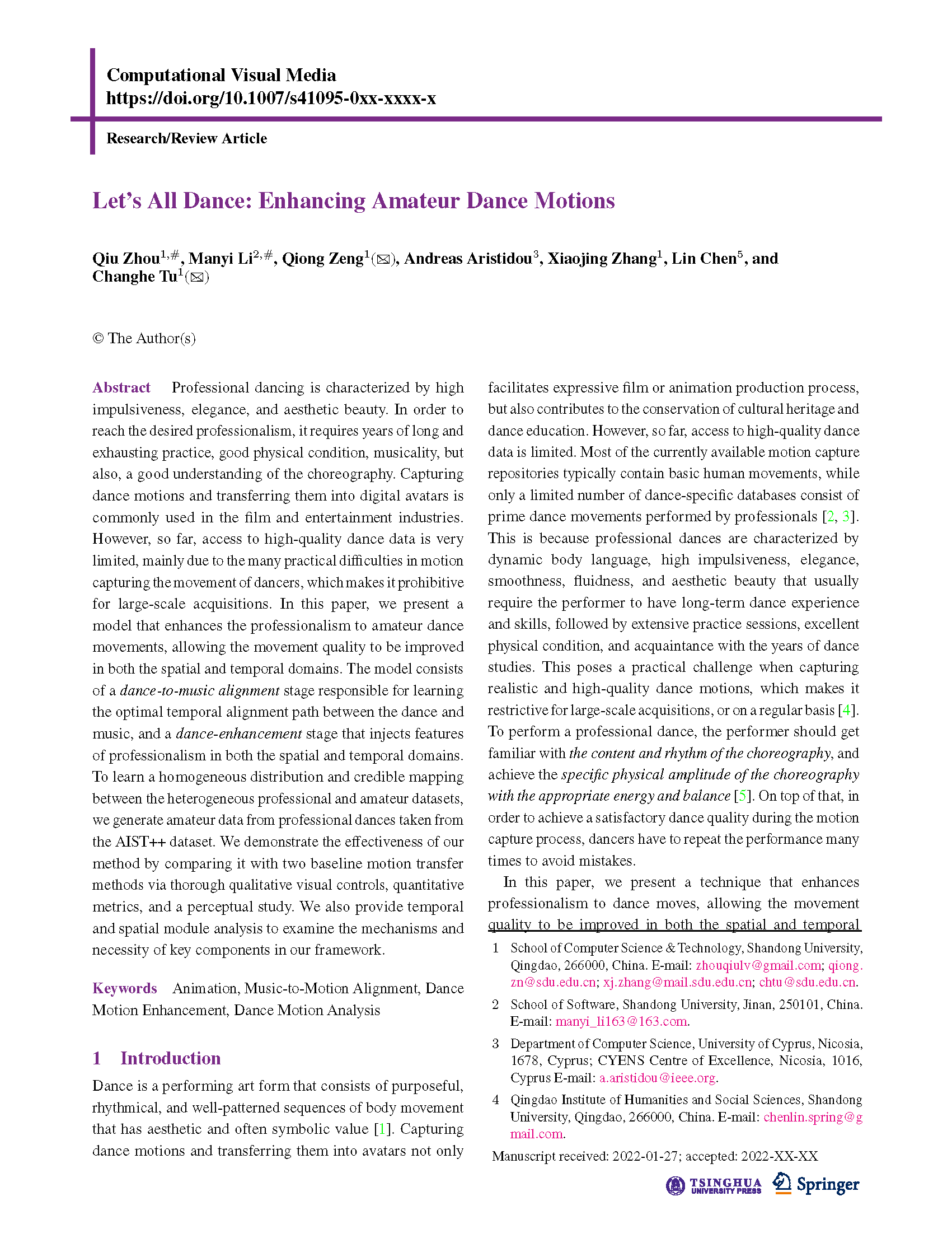Let’s All Dance: Enhancing Amateur Dance Motions
Qiu Zhou1
Manyi Li1
Qiong Zeng1
Andreas Aristidou2
Xiaojing Zhang1
Lin Chen 1
Changhe Tu1
1Shandong University
|
|
Abstract:
Professional dancing is characterized by high impulsiveness, elegance, and aesthetic beauty. In order to reach the desired professionalism, it requires years of long and exhausting practice, good physical condition, musicality, but also, a good understanding of the choreography. Capturing dance motions and transferring them into digital avatars is commonly used in the film and entertainment industries. However, so far, access to high-quality dance data is very limited, mainly due to the many practical difficulties in motion capturing the movement of dancers, which makes it prohibitive for large-scale acquisitions. In this paper, we present a model that enhances the professionalism to amateur dance movements, allowing the movement quality to be improved in both the spatial and temporal domains. The model consists of a dance-to-music alignment stage responsible for learning the optimal temporal alignment path between the dance and music, and a dance-enhancement stage that injects features of professionalism in both the spatial and temporal domains. To learn a homogeneous distribution and credible mapping between the heterogeneous professional and amateur datasets, we generate amateur data from professional dances taken from the AIST++ dataset. We demonstrate the effectiveness of our method by comparing it with two baseline motion transfer methods via thorough qualitative visual controls, quantitative metrics, and a perceptual study. We also provide temporal and spatial module analysis to examine the mechanisms and necessity of key components in our framework. Video:
Acknowledgement:
This research was supported by an NSFC grant (No. 62072284), a grant from the Natural Science Foundation of Shandong Province (No. ZR2021MF102), a Special Project of Shandong Province for Software Engineering (11480004042015), and internal funds from the University of Cyprus. The authors would like to thank Anastasios Yiannakidis (University of Cyprus) for capturing the amateur dances, and the volunteers for participating in the perceptual studies. The authors would also like to thank the anonymous reviewers and editors for their fruitful comments and suggestions. Bibtex:
@article{danceprofessionalize, |



